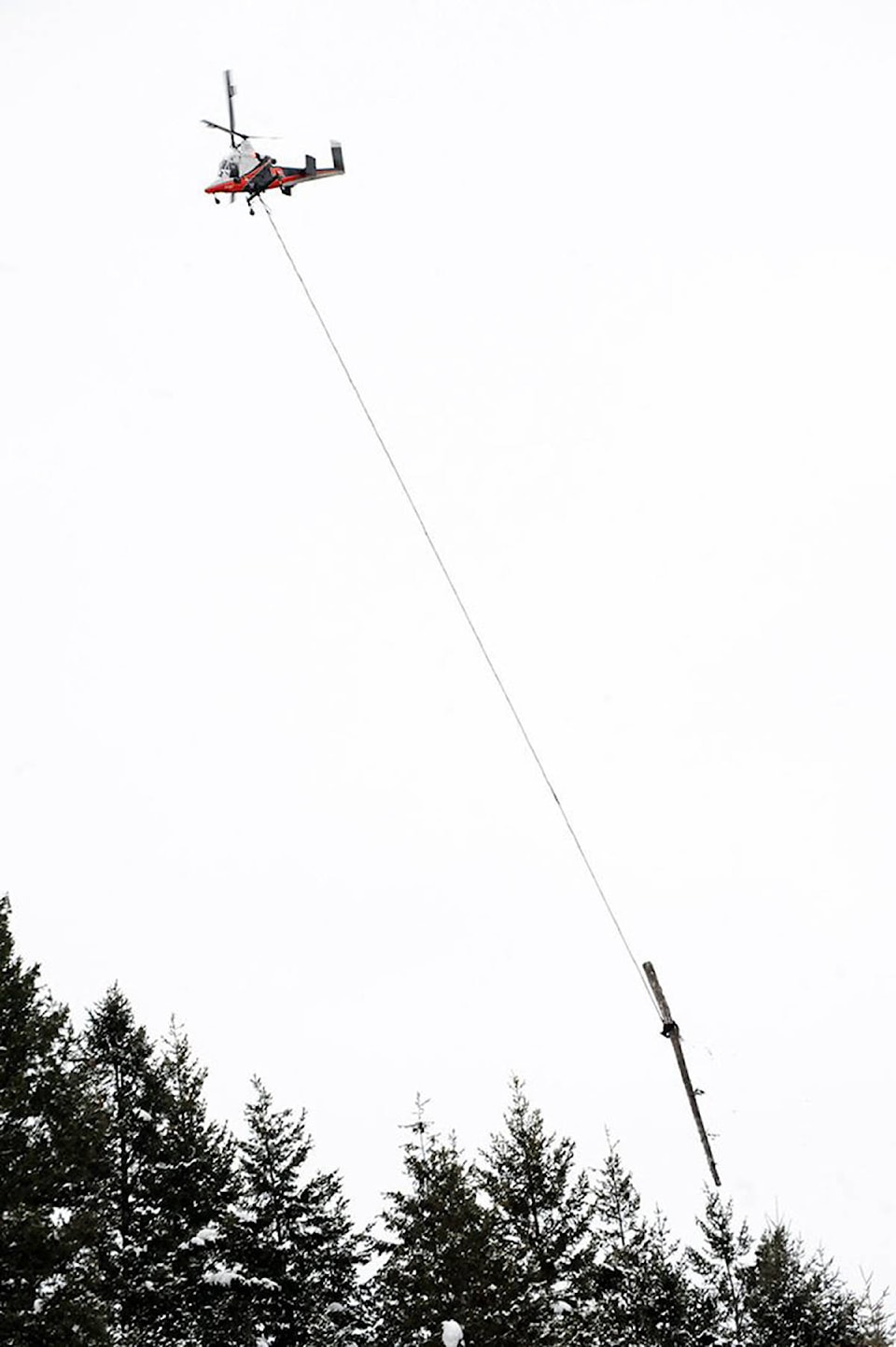Helicopter logging operations underway in the Williams Lake area to minimize the spread of Douglas fir beetles on Crown land are being expanded to treat two additional areas over the winter.
Heli logging work has been underway for the past four weeks in the Esler area, the South Lakeside area and a site further south off Anderson Road.
The new locations scheduled for treatment include North Lakeside (in steep terrain on Fox Mountain) and the Slater Mountain area (west of Williams Lake). Helicopter flights in these additional areas will likely begin as early as Jan. 21, 2019.
This heli-logging project is being conducted under the direction of the Ministry of Forests, Lands, Natural Resource Operations and Rural Development and is expected to be completed by mid-March. Residents can expect to see helicopters in the air, but no flights will occur over residential buildings. The aircraft will only be flying during daylight hours.
READ MORE: Heli-logging aimed at Douglas-fir beetle infestation continues
Owners of livestock and pets are advised to take precautions to protect their animals from injuring themselves. Horses, in particular, can be sensitive to helicopter noise and may run if startled.
For safety reasons, members of the public should stay away from areas where helicopters are flying. They are also reminded that unmanned aerial vehicles (drones) must not be operated anywhere near harvesting areas, since doing so can endanger the safety of pilots and workers on the ground.
Douglas fir beetle populations are higher than normal in some parts of the Cariboo, but helicopter logging — used to selectively remove infested trees and protect other trees nearby — and related containment treatments have helped slow the spread of the beetles around Williams Lake, said the Ministry of Forests, Lands, Natural Resource Operations and Rural Development.
The forest pests normally attack small groups of trees. A significant infestation can weaken and eventually kill a tree over a period of about one year. This is the third straight year that heli-logging has been used in the area to decrease their numbers.
READ MORE: Ministry to target Douglas-fir beetle infestation with heli-logging again
In addition to the direct harvesting of infested trees, the Williams Lake Beetle Management Unit 2018 Treatment Plan includes the following activities:
• The anti-aggregative pheromone methyl cyclo hexenone (MCH) will be used to prevent or disrupt Douglas fir beetle attacks on small infestation sites. This naturally occurring pheromone can successfully repel the beetles from vulnerable areas and also help protect small stands of trees near parks, protected areas, campgrounds, residential properties or old growth management areas. In some cases, the application of this pheromone has reduced Douglas fir beetle attacks by over 90 per cent.
• “Trap trees” will be established by cutting down large, healthy Douglas fir trees in accessible areas. The trees will be left on the ground to attract adult beetles in the spring. Trap trees are more successful in attracting adult beetles than standing trees and therefore can greatly reduce the number of attacks on healthy Douglas fir trees nearby. Once adult beetles and larvae are established within a trap tree, it will be taken to a mill where the beetles and larvae will be destroyed in the milling process.
• Where appropriate, and if no other practical options are available, some infested trees may be cut down and burned on site to destroy the beetles present in the bark.
• Funnel traps will also be deployed within mill yards and log storage areas to capture adult beetles.
Do you have a comment about this story? email:
editor@wltribune.com
Like us on Facebook and follow us on Twitter.
